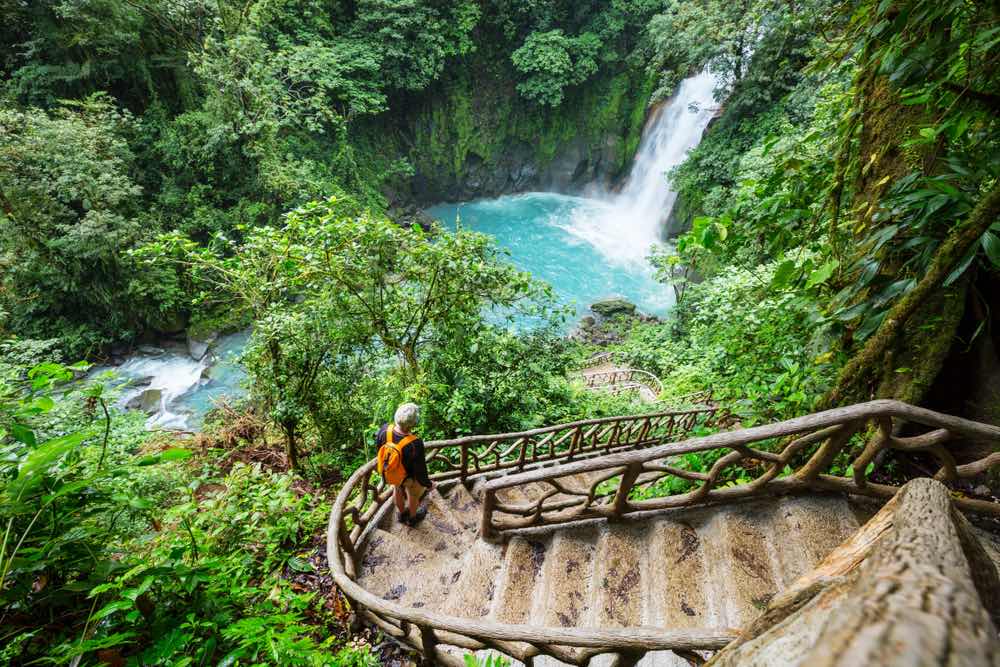Is There a Fountain of Youth Flowing in one region of Costa Rica?

In Nicoya, Costa Rica, where the average income is modest by world standards, people live, on average, to age 85, which is among the highest life expectancies in the world. In comparison, Americans average 77 years, according to the latest federal census records.
Why do Nicoyans live longer?
Researchers have long known that in longevity hotspots, a number of characteristics are common, such as strong social networks, consumption of unprocessed foods, and a lifestyle that promotes walking as a frequent form of transportation. While common sense, these observations require proof and more precise scientific detail. David Rehkopf, an associate professor of epidemiology and population health at the Stanford School of Medicine, sought this detail. Over the past 15 years, Rehkopf’s studies in Nicoya have revealed social factors, an immune system trait, and chromosomal features directly linked to longevity. These findings have been replicated in other longevity regions in Greece and Italy.
Rehkopf explores how social factors influence genetic features in Sardinia, Italy, and Ikaria, Greece, and their impact on longevity. These regions, along with Nicoya and Okinawa, Japan, comprise the four “blue zones” areas recognized for their populations’ longevity. Rehkopf’s interest in Costa Rica was piqued when he learned about the impressively long lives of the people there. The Costa Rican census and population-tracking system had stored generous amounts of meticulously gathered data from past decades, creating a trove of dependable, unmined data.
Rehkopf formed a strong partnership with a like-minded Costa Rican demographer, Luis Rosero-Bixby, PhD, and their collaboration has been instrumental in their ongoing survey of the people of Nicoya.
A lifestyle that involves a lot of physical activity, a healthy diet, and strong social bonds gives them hope for aging well. A Western lifestyle that involves processed foods and sedentary behaviors is a threat. “Being regular and committed to physical activity – like walking – and other forms of social activity may be key to aging well,” says Rehkopf.
For researchers, Nicoya serves as a real-world laboratory for aging well. The diet of Nicoya’s residents is rich in locally grown beans, corn, squash, and tropical fruits, all of which are high in antioxidants, vitamins, and minerals that help to stave off chronic disease. Dietary calcium derived from the water that flows through the region’s limestone is a huge plus for bone health.
A second important factor is the strong family and community bonds. “Many generations will live in one home or in close proximity,” says Rehkopf. “This helps to ensure that older members of the community are well-cared for.” Research shows that social networks are important for health and can lead to prolonged life when people feel supported. It is not surprising that there is an increased sense of community in Nicoya.
“The spiritual and cultural life of Nicoyans also helps to explain their longevity,” says Rehkopf. “Many Nicoyans are religious and engage in regular faith or spiritual practices, while others engage in stress management practices such as relaxation and meditation.” Research from the Blue Zones has shown that stress is a huge issue in modern life and that stress management practices are a key to longevity.
A third factor in Nicoya is a physically active lifestyle. “Physical activity comes not from gym workouts but from daily chores such as farming and walking to visit neighbors,” says Rehkopf. “This is good for the heart, bones, muscles and for flexibility. I have one neighbor who is 93 years old and works in his garden every day.”
A fourth factor is the culture of “plan de vida” – life plan. For Nicoyans, the idea is to identify some purpose and goals. “They might work in their garden, go to community events, help with family affairs, but they all have something to do,” says Rehkopf. “It is not that they don’t engage in relaxation; they do. But they do something to give their lives a sense of purpose, and I think that is an important part of longevity.” In a study published in 2022 in the journal Aging, Rehkopf’s team looked at the genome of Nicoyans and discovered some fascinating traits that they believe might contribute to their longevity. Specific immune system traits and chromosomal features, such as long telomeres, were more frequent in the Nicoyan population.
The Nicoyan lifestyle clearly demonstrates that diets rich in whole foods, regular physical activity, strong community connections, and a sense of purpose could be key to enhancing the quality and length of life. As researchers like Rehkopf continue to explore these longevity hotspots, they provide a blueprint for aging well that transcends geographical boundaries.
For additional reading about longevity and the Blue Zones, read this post on Spiritual Seniors:
The Secrets of the Blue Zones
Informed by “Longevity’s Secret Sauce” in Stanford Medicine Magazine.
Key Takeaways…
- Nicoyans live to an average of 85 years, significantly higher than the American average of 77 years.
- Strong social networks, unprocessed food consumption, and an active lifestyle are common in Nicoya and other “blue zones.”
- Nicoyans consume nutrient-rich, unprocessed foods and engage in daily physical activities through farming and manual labor.
- Multigenerational living and close community ties provide emotional support and ensure elder care.
- Practices of faith and spirituality, stress management, and favorable genetic traits such as longer telomeres contribute to longevity.




